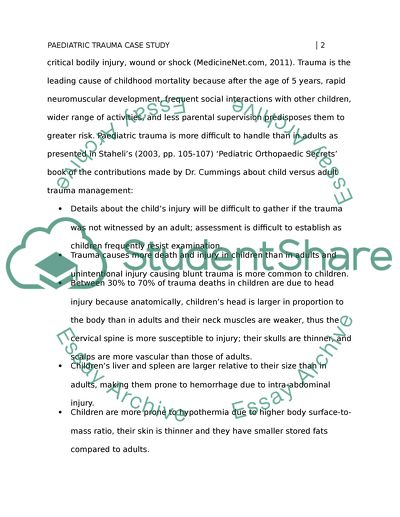Cite this document
(“Paediatric Trauma Essay Example | Topics and Well Written Essays - 2000 words”, n.d.)
Retrieved from https://studentshare.org/environmental-studies/1420542-case-study
Retrieved from https://studentshare.org/environmental-studies/1420542-case-study
(Paediatric Trauma Essay Example | Topics and Well Written Essays - 2000 Words)
https://studentshare.org/environmental-studies/1420542-case-study.
https://studentshare.org/environmental-studies/1420542-case-study.
“Paediatric Trauma Essay Example | Topics and Well Written Essays - 2000 Words”, n.d. https://studentshare.org/environmental-studies/1420542-case-study.


